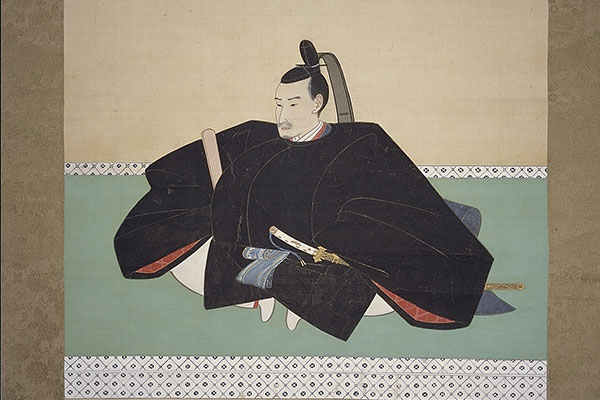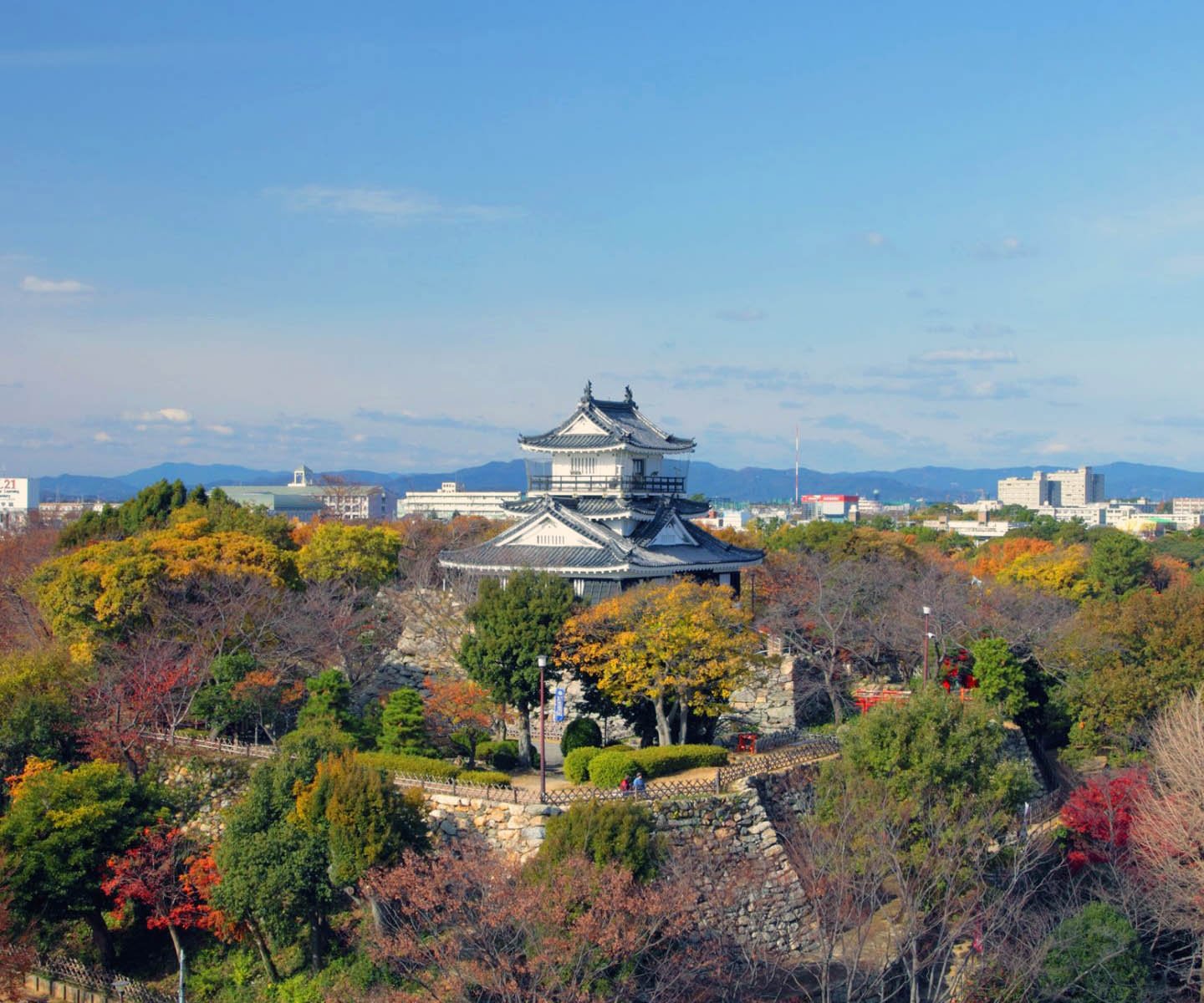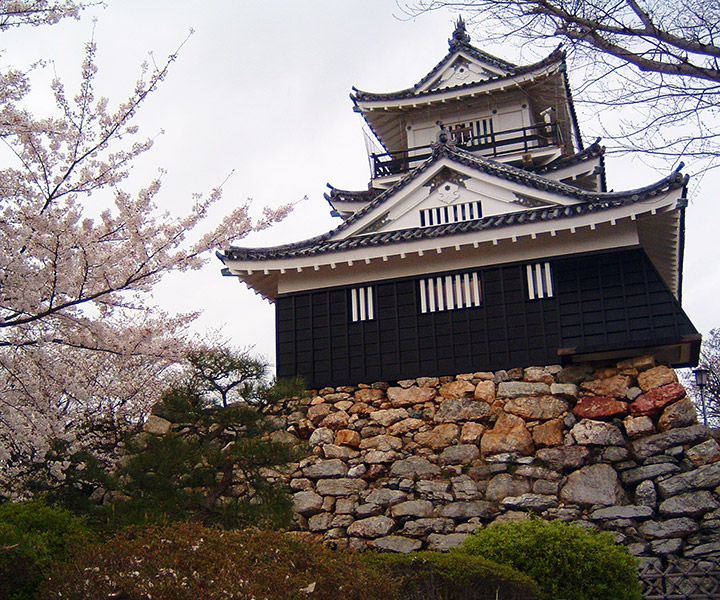- TOP
- 能楽を旅する 浜松城_en
Main figures related to the history of Hamamatsu Castle

Tokugawa Ieyasu, who built the castle and spent about 17 years there
Before Hamamatsu Castle was built, it was the castle of the Imagawa clan. In 1570, after attacking and capturing the Imagawa clan's castle, Tokugawa Ieyasu moved his base to Hamamatsu and built a new castle, Hamamatsu Castle. After that, Tokugawa Ieyasu spent 17 years at Hamamatsu Castle from the age of 29.

Twenty-two generation leaders from nine Daimyo Families, including Tadakuni Mizuno served as lord of the castle
In 1586, Tokugawa Ieyasu moved his headquarters to Sumpu Castle. After that, the lords of the castle continued to change until the end of the Edo period. Over the course of 265 years, there were 22 generations of 9 families who became the lords of the castle. Hamamatsu Castle is also known as the "Success Castle" because many of the successive castle lords held important positions in the shogunate. Among them, Mizuno Tadakuni (※1), who is famous for the Tenpo Reforms, became a shrine magistrate when he was the lord of Hamamatsu Castle. In 1828 he was promoted to shogunal adviser.
※1 Annotations are at the bottom
Discover the relationship between Hamamatsu Castle and Noh!
Hamamatsu Castle × Noh

Tokugawa Ieyasu began performing "Utaizome" on New Year's Day as an annual event at the castle
When Tokugawa Ieyasu was a child, he was entrusted to the Imagawa clan as a hostage. From that time on, he was familiar with Nohgaku.
Tokugawa Ieyasu started singing "Utaizome" when he was the lord of Okazaki Castle, where he used to live before moving to Hamamatsu Castle. During the Edo period, "Utaizome" became an annual event at Edo Castle. "Utaizome" is the first ritual of singing Noh songs at the beginning of the new year. When the shogun, Gosanke(※2), and feudal lords gathered together, the head of the Kanze school and other schools sang. It is said that it was not possible to sing any other Noh songs until the "Utaizome" was over and the new year had been brought in.
※2 "Gosannke" is the most noble three branches of the Tokugawa clan
※3 Photo:Annotations are at the bottom

The "Yumiya Tachiai" was danced to celebrate Ieyasu's victory
During the Hamamatsu Castle era, Tokugawa Ieyasu was served by Tadamune Sosetsu (the 7th head of the Kanze school), a Noh teacher. Here is an anecdote that shows the deep connection between the two.
In 1572,Tokugawa Ieyasu fought Takeda Shingen at the Battle of Mikatagahara. The Tokugawa army was defeated and fled back to Hamamatsu Castle. When Tokugawa Ieyasu arrived at Hamamatsu Castle, he ordered the castle gates to be opened so that the fleeing soldiers could enter the castle. However, when Shingen saw it, he misunderstood that there was an ambush and withdrew his army. At Hamamatsu Castle, Tokugawa Ieyasu received a report that Takeda Shingen's army was leaving and gave the kosode gown he was wearing to the nearby Tadamune Sosetsu. Tadamune Sosetsu put on the given kosode on the spot and danced a victory song called "Yumiya Tachiai." Since then, it is said that Yumiya Tachiai came to be danced at the beginning of "Utaizome" as well.
※4 Photo:Annotations are at the bottom
A sturdy castle built by Ieyasu Tokugawa
Highlights of Hamamatsu Castle

The Stone Wall as It Was When the Castle Was Built
Most of Hamamatsu Castle's buildings were demolished during the Meiji period. However, the foundation of the castle tower and the stone walls of the main enclosure remained as they were when the castle was built. The stone walls were built with a "nozurazumi" style (a method of stacking natural stones). Just looking at the rock formation enables you to feel the wild power.

Castle Tower and Castle Gate Rebuilt After the Showa Period
In 1958, the castle tower (photo) was rebuilt from the basement floor up until the third floor. From the observatory of the new castle tower, you can overlook the city of Hamamatsu. Historical materials and weapons are displayed in the castle. The shop on the first floor sells about 100 kinds of souvenirs, including castle seals and gate pass limited to Hamamatsu Castle. Don't miss the castle tower gate, which was restored in 2014.

Hamamatsu Castle Park, a Famous Spot for Cherry Blossoms
Hamamatsu Castle Park surrounds Hamamatsu Castle. It has a Japanese garden and a central lawn square, and is popular with Hamamatsu citizens as a place to relax. It is also known as one of Hamamatsu's leading cherry blossom spots, and about 360 cherry blossoms, including Yoshino cherry trees, are in full bloom in the spring. It is also lit up at night, and is crowded with many cherry blossom viewers. Every Sunday, Hamamatsu City's mascot character, "Successful Daimyo Ieyasu-kun," appears in the park and is gaining popularity.
Photo Gallery
.jpg)
Japanese garden at Hamamatsu Castle Park

Castle Tower
.jpg)
Castle tower gate restored in 2014
.jpg)
Armor handed down in the Honda family
.jpg)
Armor of Tokugawa Ieyasu (Reproduction)
.jpg)
The stone wall as it was when the castle was built
.jpg)

.jpg)
.jpg)
.jpg)
.jpg)
Access
- Address
100-2 Motoshirocho Naka-ku,
Hamamatsu-shi, Shizuoka-ken 430-0946
Japan- Phone
- Traffic Guide
5 minutes drive from JR Hamamatsu Station
- Nearest BusStop
6 minutes walk from "Shiyakusho Minami" (Entetsu Bus)
- Parking Lot
Hamamatsu Castle Parking Lot
- OfficWebSiteSite
- 1 Portrait of Tadakuni Mizuno Collection: Tokyo Metropolitan University Library (processing)
- 3 "Chiyoda no Onomote Utaizome" by Yoshu Chikanobu, published in 1897, a series of three large-sized nishiki-e prints: Tokyo Metropolitan Central Library Special Collection Room (processing)
- 4 "Chiyoda no Onomote Utaizome" by Yoshu Chikanobu, published in 1897, 3 large-format nishiki-e collections: Tokyo Metropolitan Central Library Special Collection Room (part)









